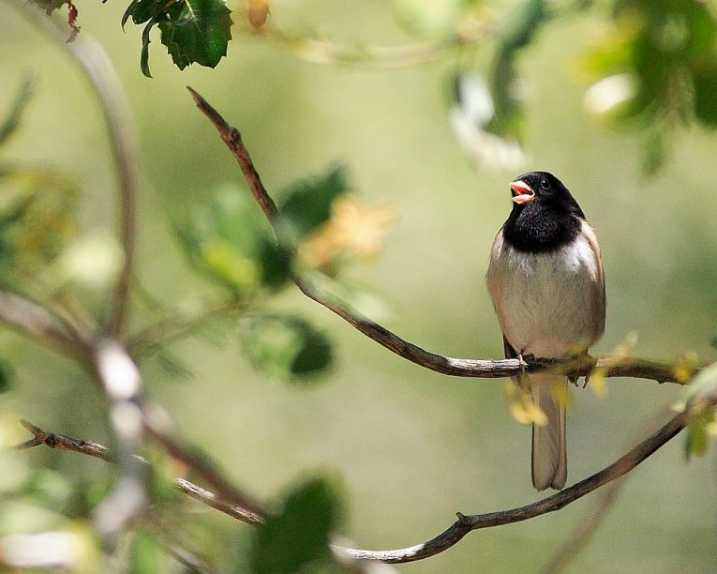sparrowthe American junco has a good tune. Wherever he sings, in the Arctic or as the Oregon variety, he can tweet his song in many and various ways and still expect an appreciative audience. Our thanks to Goncalo for the pic! Dark-eyed junco image; Credit: © David Levinson
The dark-eyed junco, Junco hyemalis, is a common American bird, related to the bunting, but regarded as one of the American sparrows, even though it has a bill like a finch. The interest in the species is often with its complex song, which is now one of the classics. He is no nightingale, but the social learning that adjusts birdsong to different bird cultures tends to be neglected by the male junco, preferring lots of innovation! The paper can be found in the Royal Society Open Science journal Shared songs are of lower performance in the dark-eyed junco. The honours go to Goncalo C. Cardoso and Jonathan W. Atwell of Universidade do Porto, Portugal and Indiana University, US.
Between 25 and 45% of males in this study shared songs between at least 2 individuals. As the authors expected, the individual singing was of high quality in terms of specially selected metrics such as vocal deviation
(a mix of syllable rate and frequency bandwidth.) So the shared songs were performed at a lower level than those of individual songsters. Invention and improvisation raised the level apparently when males were alone, trying somehow to improve upon the musicality they have learned.
Cultural events are not associated with songbirds, but social learning builds their repertoires when they don't simply sing their heart out, based on their innate ability. The flexibility of the junco has been investigated thoroughly many times. Inventive and improvised novelty is the means by which these little guys entertain both their females and ourselves! The unshared songs of the most inventive birds have the most novel traits within their notes and trills. It is these songs too that the male uses when he is motivated the most - presumably during a mating display or when counter-singing. That leaves us thinking that the low quality, shared song is likely to be the only one used for social learning. In this paper, the juncos were found to ignore the high performance songs of others in many cases The closeness of a neighbouring male may determine whether his song is learnt or not, or perhaps a song needs to be sung by more than one individual. Wherever we investigate, more questions crop up! The diversity of syllables in their continuous songs sets the juncos apart, creating a cultural pool that is ever-changing. This is totally different to the situation in many songbirds, (eg. swamp sparrows,Melospiza georgiana) who largely learn the local culture. (Perhaps human song-writers can be fitted into this cultural pattern too.)
To show the research on songbirds would fill encyclopaedias. As one of our many examples, the gorgeous Gouldian finch from Australia features his song in this story, where, like the swamp sparrows, the mate is choosing her favourite song, if not the singer!










